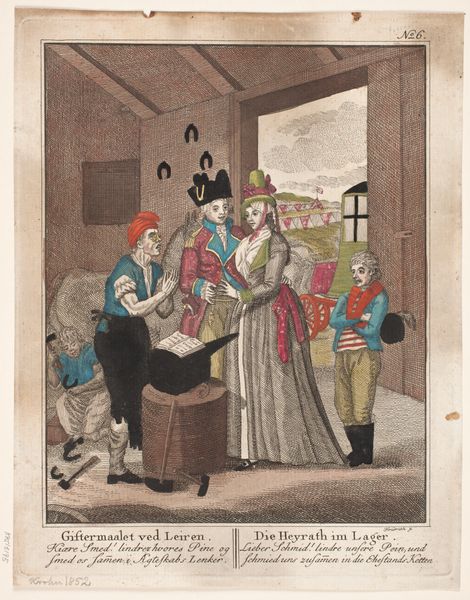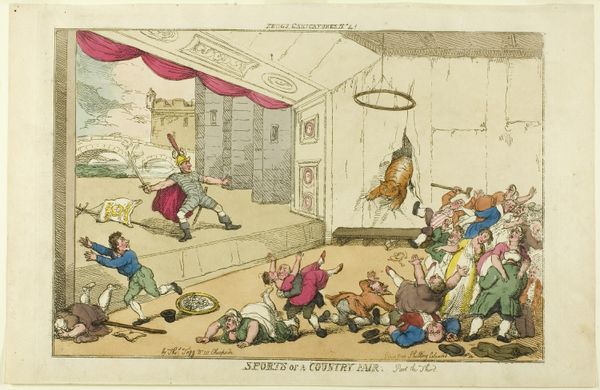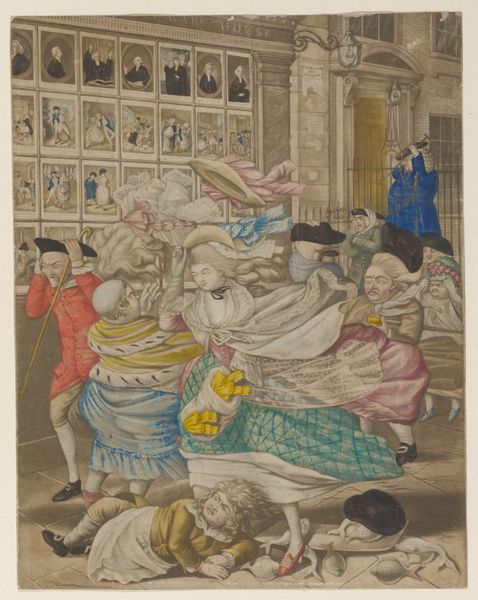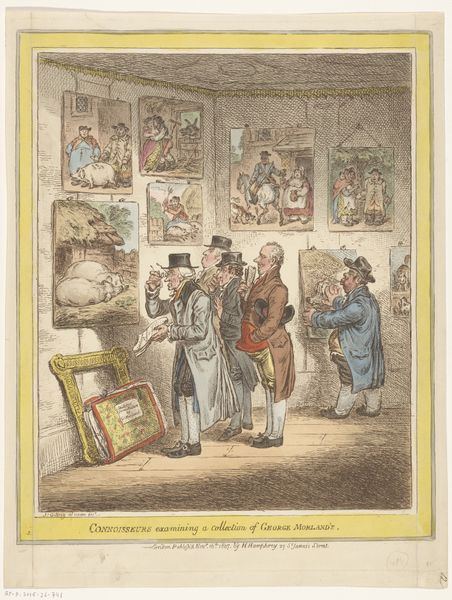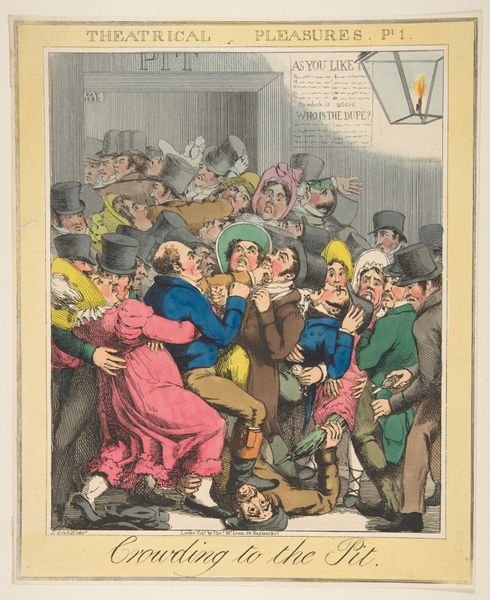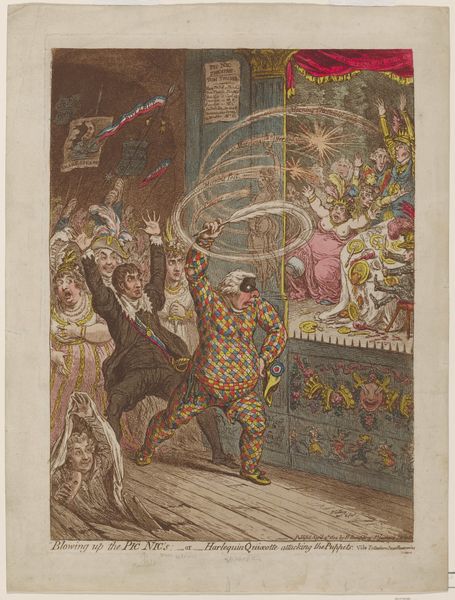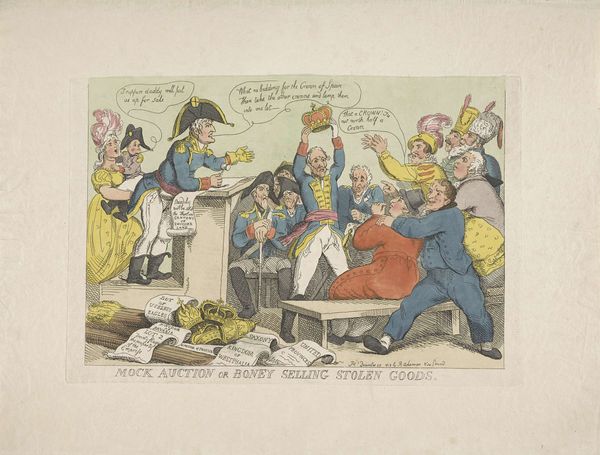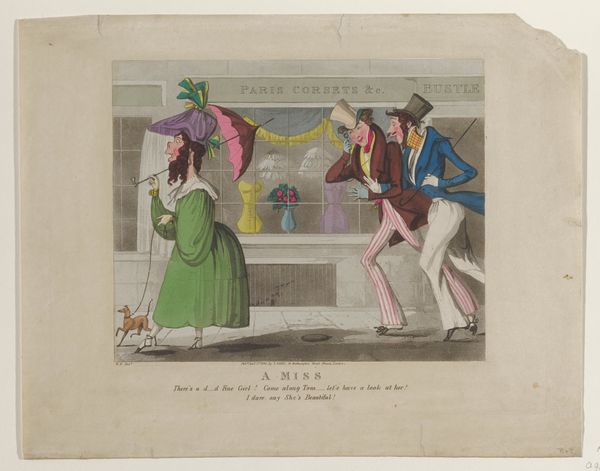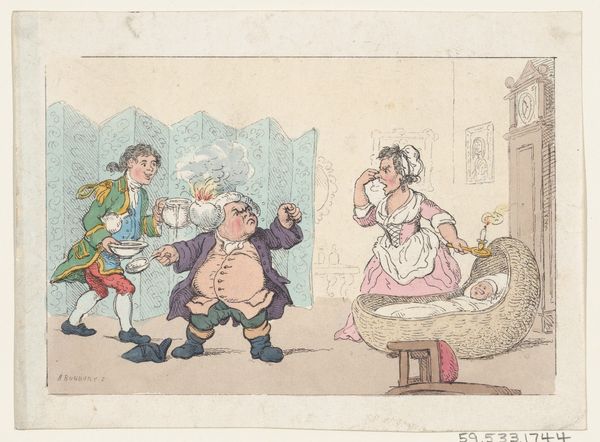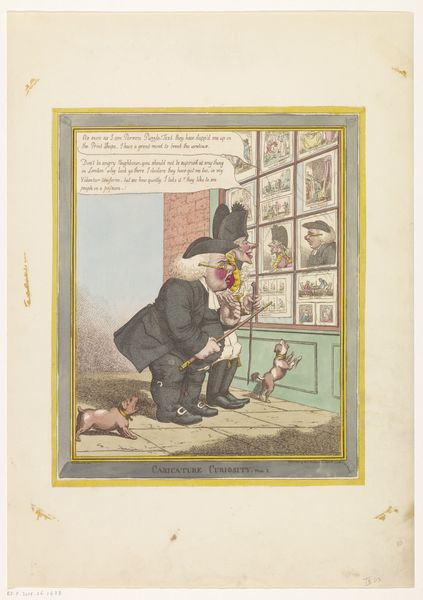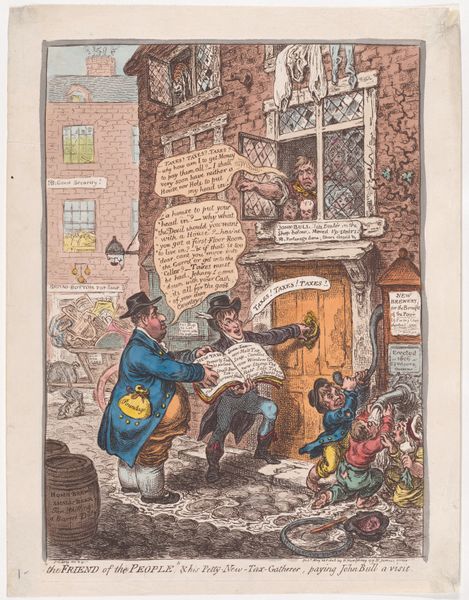
Dimensions: 10 x 8 in. (25.4 x 20.32 cm) (plate)
Copyright: Public Domain
Curator: Alright, let's delve into this piece by James Gillray. Titled "Very Slippy Weather," created around 1808. It's currently held here at the Minneapolis Institute of Art. Editor: Oh, this is delightful! The sheer chaos! It feels like a moment frozen in time, a slapstick comedy routine unfolding right before your eyes. Curator: Indeed. Gillray was a master of satire, and this hand-colored etching and aquatint print provides a glimpse into London life, or at least Gillray's very pointed view of it, during the Romantic era. The very means of its production -- etching and aquatint -- made it widely accessible for distribution in London society, primarily through print shops. Editor: Look at the unfortunate fellow sprawled on the ground! It is also remarkable that his possessions—coat, cane and some coins, scatter around him, tokens of material existence momentarily disrupted! And the expressions of the bystanders – so many narratives unfolding simultaneously within a singular image. How might class distinctions be underscored here? Curator: Good eye! Gillray used the print as a social commentary, aiming sharp criticisms at the wealthy, their ostentatious consumption, the superficiality and social pretense inherent in the image. You have people in their finery, probably the latest fashion using and engaging with commerce and exchange directly outside Humphrey's Printshop, at 27 James Street. Humphrey of course being a major print seller in this period and acting as a sort of informal publisher for artists such as Gillray. Editor: Notice the detailed storefront and the windows there acting as almost a parallel gallery—commenting on consumption as performance and commerciality within the visual field. Even the dog seems to be in on the act. I do wonder what print selling strategy underpinned the original context of this. Curator: Humphrey would have placed prints like these in his shop window, attracting the eyes and wallets of passersby. The prints reflected the issues and personalities dominating the current conversation on the streets, from politics and social etiquette. Editor: The technique is also noteworthy here -- the etching and the addition of color highlight a certain element. How does the hand-coloring shape the perception and impact? Curator: The hand-coloring, usually done by women who were paid for the process, emphasized certain features that further underlined the satire, perhaps. Also there is an engagement with labour that is easy to overlook if you simply focus on "High Art" themes. Editor: It is quite wonderful to think about layers embedded in what appears, at first glance, simple comic image. It tells us something profound, about Gillray and his society. Curator: A print designed to be a mass commodity but that gives us, today, such a privileged, critical view into a slice of Georgian London, from high society all the way to production of images itself.
Comments
minneapolisinstituteofart almost 2 years ago
⋮
From a series of prints about the weather, Gillray's Very Slippy Weather features the print shop of his exclusive publisher, Hannah Humphrey, at 27 St. James's Street, where Gillray lived and kept a studio. Among Mrs. Humphrey's clients was the Prince of Wales, himself the target of a number of devastating caricatures by Gillray. The prince nonetheless bought 121 prints from Humphrey's shop in one year. No one was spared ridicule in Gillray's world. Here his regular clientele is amusingly scorned, portrayed rather grotesquely gawking at the prints displayed in the shop window while a round clergyman inside considers purchasing an anti-papist print Gillray had executed a few years prior.
Join the conversation
Join millions of artists and users on Artera today and experience the ultimate creative platform.

